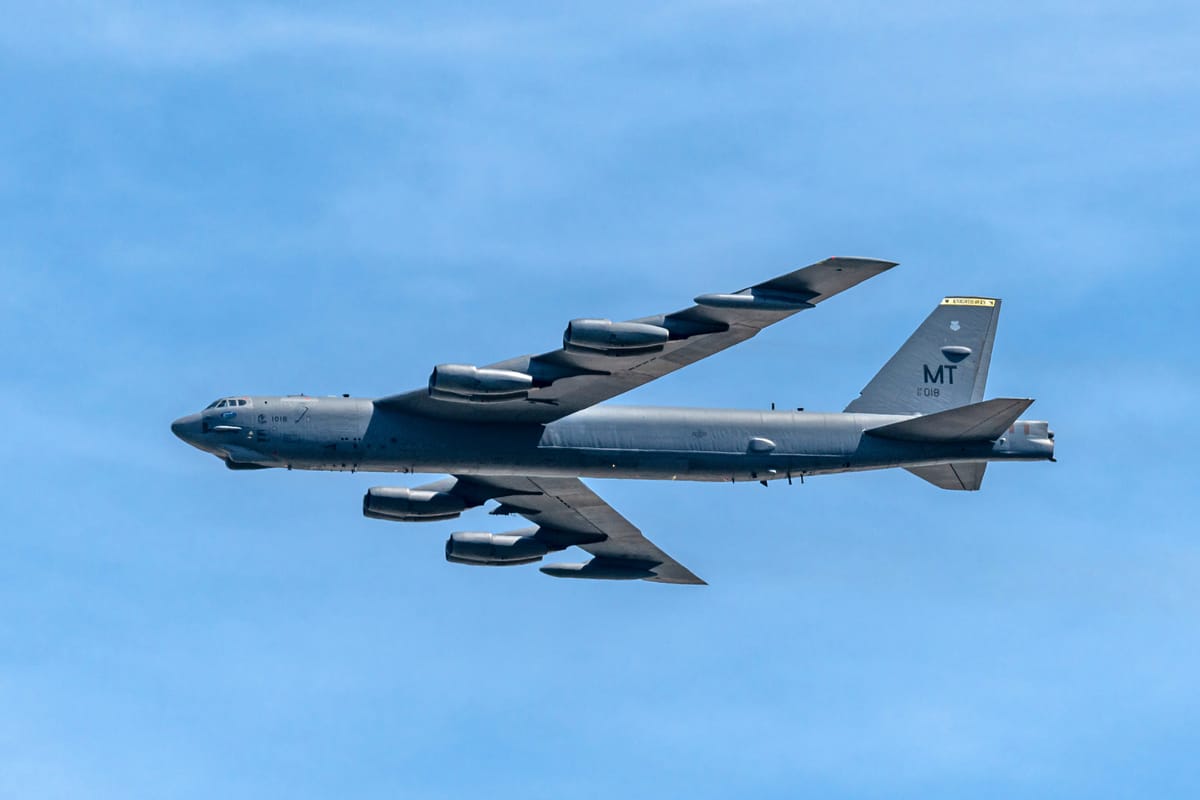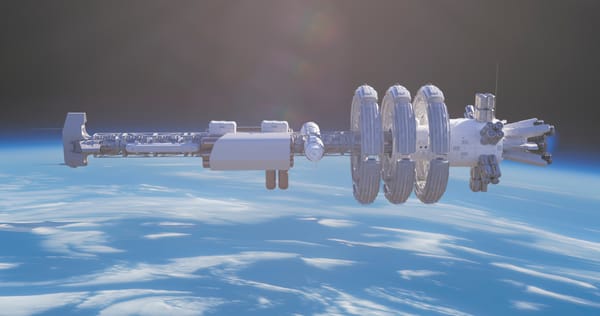Air Strategic Strike Guide

Strategic bombers are long-range heavy aircraft designed to deliver large payloads of weapons (conventional or nuclear) over intercontinental distances . Since their rise to prominence in the mid-20th century, they have been pivotal tools of military strategy – from the massive area bombardments of WWII to the nuclear deterrence patrols of the Cold War and the precision strikes of today. These aircraft serve as a visible symbol of military power, capable of deterrence by their mere presence and providing global force projection for their nations’ interests .
Five major military powers – the United States, Russia (formerly the Soviet Union), China, the United Kingdom, and France – have developed and fielded strategic bombers, each undergoing generational shifts in technology and doctrine. This article reviews the evolution of manned long-range bombers from the early 20th century to the present, examining how successive generations enhanced range, payload, and stealth. It also analyzes the strategic roles these bombers have played – from nuclear deterrence to power projection – for each of the five major powers, and looks ahead to the future, including the potential emergence of unmanned strategic bombers.
| Name | In Service | Type | Gen | Active |
|---|---|---|---|---|
| 🇺🇸 B-21 Raider | 2027E | Stealth nuclear bomber | 6th | 100 (planned) |
| 🇨🇳 Xian H-20 | 2027E | Stealth nuclear bomber | 6th | 50 (projected) |
| 🇷🇺 PAK DA | 2027E | Stealth nuclear bomber | 6th | Limited |
| 🇺🇸 B-2 Spirit | 1997 | Stealth nuclear bomber | 5th | 20 |
| 🇷🇺 Tu-160 Blackjack | 1987 | Supersonic nuclear bomber | 4th | 14 |
| 🇺🇸 B-1B Lancer | 1986 | Supersonic bomber | 4th | 45 |
| 🇷🇺 Tu-22M3 Backfire | 1983 | Nuclear strike bomber | 3rd | 40 |
| 🇨🇳 Xian H-6 | 1969 | Nuclear bomber | 2nd | 120 |
| 🇷🇺 Tu-95 Bear | 1956 | Turboprop nuclear bomber | 2nd | 55 |
| 🇺🇸 B-52 Stratofortress | 1955 | Nuclear bomber | 2nd | 76 |
From Propellers to Jets: Early Generations (1910s–1940s)
The concept of strategic bombing emerged in WWI and fully materialized in WWII. Early attempts like the German Gotha raids and Allied Handley Page bombers foreshadowed the idea that air power could strike an enemy’s heartland. However, it was World War II that saw strategic bombing come of age: the U.S. and UK produced tens of thousands of heavy bombers (e.g. the American B-17 Flying Fortress and British Avro Lancaster) to conduct wide-scale bombing of industrial and civilian centers. By war’s end, the U.S. B-29 Superfortress demonstrated the ultimate strategic strike – dropping the only nuclear weapons ever used in combat in 1945 . These propeller-driven behemoths had relatively limited range and required forward bases, but they proved that long-range bombers could have decisive strategic effect. The paradigm was set: a bomber force able to devastate an enemy’s war-making capacity or cities, thus potentially forcing a surrender. This era also established the deterrent concept of bombers – Stanley Baldwin’s famous 1932 assertion that “the bomber will always get through” captured the fearful respect these weapons commanded .
Cold War Jet Age: Nuclear Deterrence and Supersonic Flight (1950s–1970s)
After WWII, jet propulsion and the advent of nuclear arms transformed strategic bombers. In the 1950s, the United States introduced the B-52 Stratofortress (first flown 1952, in service 1955) – an eight-engine jet bomber with intercontinental range (~8,800 miles) and enormous payload (up to 70,000 lbs of bombs/missiles) . The B-52 became an icon of the Cold War, able to carry nuclear gravity bombs or cruise missiles, and it remained continuously on alert as part of America’s nuclear triad . In the Soviet Union, lacking an immediate indigenous design, engineers reverse-engineered the B-29 into the Tu-4 “Bull”, and soon developed their own long-range jets like the Tu-16 “Badger” in the mid-1950s . By 1956 the Soviets fielded the Tu-95 “Bear”, a unique turboprop bomber with swept wings and four contra-rotating prop engines, giving it exceptional range (~15,000 km) to reach the U.S. . The Tu-95 could carry nuclear bombs or air-launched cruise missiles (up to 15,000 kg of ordnance) and remains in service to this day , a testament to its durable design. The United Kingdom joined the nuclear jet age with its “V-bombers” – the Vickers Valiant, Handley Page Victor, and Avro Vulcan – introduced in the mid-1950s as Britain’s airborne nuclear deterrent . The Vulcan, for example, was a high-altitude delta-wing bomber with ~7,400 km range and 21,000 lb bomb load , capable of delivering the UK’s gravity nuclear bombs or the Blue Steel standoff missile. France, too, developed a jet nuclear bomber: the Dassault Mirage IV, a slender supersonic bomber that entered service in 1964 and carried a single nuclear bomb over a 1,200 km combat radius (extended by aerial refueling) . The Mirage IV formed the air-breathing pillar of France’s independent Force de Frappe (strike force) .
During this high Cold War period, strategic bombers were integral to nuclear deterrence strategy. Both superpowers kept fleets of bombers ready to scramble on short notice, ensuring a second-strike capability. The U.S. and UK ran airborne alert missions (e.g. the U.S. Strategic Air Command kept B-52s constantly orbiting near fail-safe points) as part of mutually assured destruction (MAD) strategy . These bombers were primarily armed with nuclear weapons, intended to obliterate enemy cities and military targets if war broke out. In fact, a 2018 U.S. Nuclear Posture Review noted that heavy bombers are “the most flexible and visible leg of the triad”, as they can be forward-deployed to signal resolve in a crisis . The mere presence of strategic bombers in international airspace was used to deter adversaries and assure allies, demonstrating the capability to strike if needed. For instance, the British V-bombers could reach Soviet targets like Moscow faster than U.S. bombers in early years , and Soviet Tu-95s regularly probed NATO air defenses, reminding the West of Soviet reach.
Technologically, the 1960s–70s saw bombers push into supersonic speed and higher altitudes to overcome defenses. The U.S. experimented with the Mach 3 XB-70 Valkyrie (which was canceled), while the Soviets fielded the Tu-22M “Backfire” (a medium supersonic bomber) and developed the swing-wing Tu-160 “Blackjack” by the late 1970s. The Tu-160, which became operational in 1987, is the largest and fastest bomber ever built – a Mach 2+ capable jet with variable-sweep wings and a massive payload of up to 45,000 kg of missiles or bombs . It was designed to carry long-range nuclear cruise missiles and outrun interceptors, representing the apex of Soviet bomber design. By contrast, the United States introduced the B-1B Lancer (IOC in 1986) – a swing-wing bomber originally meant for low-altitude penetration of Soviet airspace. The B-1B could carry 75,000 lbs of ordnance (the largest payload of any U.S. bomber) and was initially nuclear-capable, though it was later limited to conventional missions under arms treaties .
Stealth and Precision: Modern Era (1980s–Present)
By the 1980s, advancements in air defenses (radar-guided missiles, interceptors) led to a new breakthrough for bombers: stealth technology. The United States unveiled the B-2 Spirit in 1988 (operational late 1990s), featuring a flying-wing design with radar-absorbing surfaces. The B-2 could penetrate dense air defenses undetected and deliver both nuclear bombs and conventional precision munitions. With a range over 11,000 km (unrefueled) and payload ~18 tons , the B-2 marked a generational shift where survivability became as important as range and payload. Russia, facing economic turmoil in the 1990s, did not field a stealth bomber equivalent, but it has kept its Tu-95 and Tu-160 bombers updated with modern avionics and cruise missiles . Other nations ceased developing new manned strategic bombers: Britain’s Vulcans retired in the 1980s after the UK shifted its deterrent to submarine-launched missiles, and France retired the Mirage IV in 1996 (switching to Mirage 2000N and later Rafale fighters with nuclear stand-off missiles) . China, meanwhile, continued to rely on derivatives of the 1950s-era Xian H-6, a licensed Tu-16 Badger. Modern variants like the H-6K and H-6N received new engines, avionics, and cruise missiles, extending their reach. The H-6N in 2019 added aerial refueling and the ability to carry a nuclear-capable air-launched ballistic missile, marking “the comeback of the air branch of the Chinese nuclear triad” after decades of reliance on land and sea-based nukes . Although the H-6 family is medium-range (approx. 6,000 km) , China’s development of the stealthy H-20 bomber (expected in late 2020s) aims to provide true intercontinental strike capability similar to U.S. and Russian bombers .
Despite the end of the Cold War, strategic bombers did not fade into obsolescence; instead, they found new purpose in conventional wars and crisis response. Since 1991, U.S. B-52s, B-1Bs, and B-2s have been employed in conflicts from the Gulf War to Afghanistan and Iraq, delivering precision-guided conventional weapons . Notably, bombers originally intended for nuclear missions proved extraordinarily adaptable as conventional strike platforms – e.g. the B-52 launching GPS-guided bombs in Afghanistan, or the B-1B (reconfigured entirely to conventional role) becoming a “workhorse” dropping guided bombs in the war on terror. Similarly, Russia used its bombers in regional conflicts; Tu-22M Backfires conducted heavy bombing in the Soviet-Afghan War, and in 2015 Russia even deployed Tu-95MS and Tu-160s to launch stand-off cruise missile strikes against targets in Syria. These operations highlight the force projection role of bombers: a nation can strike targets thousands of kilometers away within hours, without relying on local bases. For example, in February 2024, U.S. B-1B Lancers flew from the continental U.S. to the Middle East to strike militant targets, demonstrating an ability to “project global power from the U.S. homeland” and send a strategic message to adversaries . Such missions underscore that no other nation currently matches the global reach of U.S. long-range bombers .
Importantly, strategic bombers today serve not only as weapons carriers but as geopolitical signals. They regularly participate in Bomber Task Force deployments and exercises worldwide to assure allies and deter aggression. The U.S. Air Force, for instance, rotates B-52s and B-1s through Europe, the Pacific, and Middle East, flying 24+ hour missions that integrate with allied forces – these operations are described as “strategic deterrence messaging” to remind potential aggressors of the U.S. ability to respond globally . Russia similarly flies Tu-95 patrols near NATO airspace to demonstrate its reach. In essence, modern strategic bombers combine deterrence, force projection, and combat capability: they can drop precision ordnance on battlefields or simply loiter on visible patrol to influence adversary decision-making without firing a shot.
Strategic Bomber Fleets of the Major Powers
Each of the five major powers has approached strategic bombers in line with its security needs and technological base. The table below summarizes the major bomber platforms (past and present) of these countries, along with their service periods and key capabilities:
|
Country |
Strategic Bomber Platform(s) |
Service Period |
Key Capabilities & Roles |
|---|---|---|---|
|
United States |
B-52 Stratofortress (8-engine subsonic jet) Introduced 1955; in service to present B-1B Lancer (4-engine supersonic swing-wing) Introduced 1986; in service (nuclear role ended 1990s) B-2 Spirit (stealth flying-wing) Introduced 1997; in service (B-21 Raider stealth bomber in development) |
B-52: Intercontinental range 14,000+ km with aerial refuel, 70,000 lb payload; dual-capable (nuclear gravity bombs or AGM-86 ALCMs) . Mainstay of nuclear deterrent and conventional campaigns (Vietnam, Gulf War). B-1B: 75,000 lb payload (largest of US bombers) , originally nuclear (free-fall bombs), now conventional-only, with 60+ ton weapons load of JDAMs, JASSM cruise missiles, etc. High speed at low altitude for penetration. B-2: 40,000 lb payload , low-observable design to evade radar, carries nuclear bombs (B61/B83) or precision conventional munitions. Stealth allows striking heavily defended targets – a pillar of penetrating deterrent. | |
|
Soviet Union / Russia |
Tu-95 “Bear” (4-engine turboprop) Introduced 1956; in service (modernized) Tu-160 “Blackjack” (4-engine supersonic swing-wing) Introduced 1987; in service (modernized as Tu-160M) (Tu-22M “Backfire” medium bomber and new PAK DA stealth bomber in development) |
Tu-95MS: 15,000 km range, 15,000 kg payload of bombs or Kh-55/101 cruise missiles. Iconic “Bear” with contra-rotating props, used for nuclear patrols (armed with ALCMs) and conventional cruise missile strikes. Very long endurance; part of nuclear triad air-leg. Tu-160: 12,300 km range practical without refuel ; world’s largest bomber with 45,000 kg ordnance in two bays . Mach 2+ capable; carries nuclear standoff missiles (primary) or conventional cruise missiles. Used to signal power (e.g. flights to Venezuela) and modernized for extended service. (Russia’s upcoming PAK DA stealth bomber, planned for late 2020s, aims to replace older models with a subsonic, radar-evading design to carry nuclear/cruise missiles .) | |
|
China |
Xian H-6 (turbofan medium bomber, derived from Soviet Tu-16) Introduced 1960s; in service in updated variants (H-6K, H-6N) (H-20 stealth bomber in development) |
H-6: Medium range (~6,000 km) , 9,000 kg payload capacity . Early models carried free-fall bombs or nuclear gravity bombs (first Chinese nuclear bomber in 1960s). Modern H-6K carries up to 6 CJ-20/CJ-10 long-range cruise missiles for stand-off strikes; H-6N adds in-flight refueling and can carry a nuclear-capable air-launched ballistic missile under its fuselage . Provides regional deterrence (able to target US bases/carriers in Asia) and is now part of China’s nuclear triad (restoring an air-leg). H-20: Projected subsonic stealth bomber (similar in concept to B-2) to achieve true long-range strategic strike, potentially operational in the 2030s . Would vastly increase China’s force projection and nuclear deterrence reach. | |
|
United Kingdom |
“V-bombers” – Valiant, Victor, Vulcan (jet bombers) Introduced 1955–1957; retired by 1980s |
V-force: Range ~4,000–7,000 km (with refueling); Vulcan payload ~21 × 1,000 lb bombs or one nuclear warhead . These bombers delivered Britain’s strategic deterrent in late 1950s/60s, capable of striking targets in European USSR with indigenous nuclear bombs. In the 1960s they also deployed the Blue Steel nuclear standoff missile. UK bombers had a conventional swan song in the 1982 Falklands War – Vulcans flew epic 12,000 km missions (Operation Black Buck) to bomb Port Stanley, showcasing long-range force projection . After 1969, the UK shifted to submarine-based nukes (Polaris/Trident), and the last Vulcan was retired in 1984, leaving Britain with no strategic bombers in service. | |
|
France |
Dassault Mirage IV (twin-engine supersonic bomber) Introduced 1964; bomber role until 1996 |
Mirage IV: Range ~4,000 km ferry (~1,200 km combat without refuel) ; payload one nuclear free-fall bomb (AN-11 or AN-22 ~60–70 kt yield) in internal recess . As part of France’s Force de Frappe, squads of Mirage IVAs stood ready to strike Soviet targets in Europe with nuclear bombs. Later modified to carry the ASMP nuclear cruise missile in the 1980s, extending its standoff distance . The fleet was retired from the nuclear strike mission in 1996 (some airframes used for reconnaissance until 2005). France replaced this bomber leg with Mirage 2000N and Rafale fighters armed with improved ASMP-A missiles – a shift from dedicated bombers to dual-role fighter-bombers for its air-based nuclear deterrent . |
Table: Major long-range bomber platforms of the five leading powers, with approximate service dates and capabilities. (Note: Does not include every variant; focus is on principal systems exemplifying strategic bombing roles.)
Strategic Roles and Doctrinal Shifts
Throughout their evolution, strategic bombers have been employed in three overarching roles:
- Nuclear Deterrence: From the 1950s onward, manned bombers formed one leg of the nuclear triads of the U.S., USSR/Russia, UK, France, and (emerging) China. Bombers are unique among nuclear delivery systems in that they can be launched and later recalled or redirected, offering flexibility in a crisis. They are also highly visible – a B-52 or Tu-95 flying near an adversary’s airspace sends a potent signal. U.S. doctrine has long emphasized this “signal” function: heavy bombers can be forward deployed as a show of resolve , something impossible with hidden submarines or silo-based missiles. During the Cold War, continuous patrols and quick-reaction alerts ensured that each superpower had bombers ready to inflict massive retaliation, thereby deterring a first strike by the other. Even today, nuclear-capable bombers (like the B-2 or Tu-160) perform dissuasion patrols. For newer nuclear states like China, adding a bomber leg (H-6N and future H-20) increases the credibility and redundancy of their deterrent.
- Conventional Force Projection: Bombers have proven invaluable for projecting power in conventional conflicts far from home. Their long range and large payload allow a nation to strike targets across the globe without depending on local bases or aircraft carriers. For instance, American B-52s flying from Louisiana struck targets in the Middle East, and Russian Bears based in Russia hit targets in Syria with cruise missiles. Such missions demonstrate the ability to “hold any target at risk” and can be carried out rapidly, which is crucial for crisis response. Modern strategic bombers often employ precision-guided munitions, turning what was once “carpet bombing” into accurate strikes with limited collateral damage. This precision capability, combined with persistence (hours of loiter time), means bombers can provide close air support or interdiction in a conventional theater – effectively acting as airborne artillery. In recent years, U.S. Bomber Task Force deployments have become routine, integrating with allies in exercises and thus also serving diplomacy by reassuring partners of U.S. commitment .
- Diplomatic Signaling and Assurance: Beyond their kinetic roles, bombers serve as instruments of diplomacy. Flying a squadron of B-1Bs to a region amid tensions can signal U.S. seriousness and perhaps deter adversary aggression (a form of “assurance and deterrence” often cited in USAF strategy ). Likewise, Russian bombers visiting another country or Chinese bombers circling Taiwan convey political messages. Allies take comfort in the visible presence of a friendly bomber as evidence of backing. Thus, strategic bombers play a psychological role in both deterring foes and assuring allies, leveraging their reputation and destructive power short of actual use.
It’s worth noting that over time there has been a shift in doctrine: during the Cold War, strategic bombers were primarily seen as doomsday nuclear delivery tools; in the 21st century, they are treated as dual-purpose assets that spend most of their time in conventional missions, with the nuclear role as a backstop. For example, since the end of the Cold War, American B-52s and B-1s have been used exclusively in non-nuclear missions (Vietnam, Iraq, Afghanistan, etc.) , yet they remain nuclear-capable if needed. This flexibility adds complexity to adversaries’ calculations, enhancing overall deterrence.
Future Outlook: The Next Generation and Unmanned Bombers
As we look to the future, strategic bombers are poised for another generational leap. The United States is testing the B-21 Raider, an ultra-stealthy flying-wing bomber slated to enter service in the mid-2020s. The B-21 will be dual-capable (nuclear and conventional), like its B-2 predecessor, but with improved stealth, networking, and potentially lower cost per unit to allow a larger fleet. Likewise, Russia’s PAK DA project (slated for first flight ~2025) aims to produce a subsonic stealth bomber to eventually replace its aging Bears . China’s H-20, if realized in the 2030s, will complete its triad and potentially give it a genuine global reach bomber. Thus, the classic trio of major bomber powers may soon all field 21st-century stealth bombers designed to penetrate advanced air defenses in any future conflict.
A notable doctrinal and technological development is the possibility of unmanned strategic bombers. Advances in autonomous flight and remote command are blurring the lines; the U.S. Air Force has indicated the B-21 is being designed with an open architecture that could allow remote or autonomous operation in the future, even though the initial focus is on crewed missions . In fact, Pentagon officials have confirmed the B-21 will be capable of flying unmanned missions and even controlling drone wingmen as part of a manned-unmanned team . The appeal of removing pilots from the cockpit is clear: an unmanned bomber could take on riskier missions with no fear of crew loss or political fallout from captured airmen, and possibly have longer endurance. However, fully autonomous nuclear strike platforms raise serious strategic and ethical questions. Human decision-makers provide judgment and control that purely algorithmic systems lack; as one analysis noted, keeping a human in the loop for stealth bombing missions is seen as vital to avoid catastrophic errors in complex, high-stakes scenarios . The consensus is that while drones will augment bombers (acting as scouts, jammers, or additional missile carriers under bomber command), truly autonomous strategic bombing will likely retain human oversight for the foreseeable future. This approach – often called “manned-unmanned teaming” – could significantly enhance a bomber’s effectiveness by combining AI-driven capabilities with human judgment .
In sum, future strategic bombers will likely feature stealth, networking, and optional manning, allowing them to act as hubs commanding swarms of sensors or weapons. They will continue to carry the dual burdens of nuclear deterrence and conventional power projection, but with improved survivability against next-generation defenses. Hypersonic weapons, if integrated, might allow bombers to strike even faster and from stand-off distances. Yet, even in 2030 or 2040, the core mission of a strategic bomber will remain what it has been for a century: to hold at risk targets that adversaries value most, thereby influencing their behavior in peace and war. Whether piloted by onboard crews or remotely, the strategic strike capability of these aircraft will persist as a cornerstone of great-power military doctrine.
Conclusion
The evolution of manned long-range bombers from the lumbering propeller-driven formations of WWII to today’s radar-evading jets encapsulates a story of technological innovation driven by strategic necessity. Each generation – the piston-engined heavies, the early jet nuclear bombers, the supersonic Cold War platforms, and the stealth bombers – built upon the lessons of the last, improving range, payload, precision, and survivability to overcome new defenses and new mission demands . Across these changes, the strategic rationale for bombers has been remarkably consistent. They are a deterrent weapon, threatening devastating retaliation (especially with nuclear arms) to discourage aggression . They are a tool of power projection, able to swiftly extend a nation’s reach to any point on the globe . And they serve as a reassurance and signaling device, embodying a nation’s resolve and military might in visible form. The United States and Russia have kept these roles alive by upgrading decades-old bombers with modern weapons, while developing new models for the future. China, catching up, is investing in bombers to complement its missile forces, whereas the UK and France have shifted their strategies away from dedicated bombers to other delivery systems (yet even they retain the ethos of strategic bombing through other means, like cruise missiles launched from aircraft or subs).
Looking ahead, as stealthy unmanned technologies emerge, we may witness bombers that blend the reliability of human command with the capabilities of drones, enabling missions that are today only imagined. But regardless of pilot on board or not, strategic bombers will likely remain indispensable to the doctrines of major powers. They offer a unique combination of flexibility, visibility, and sheer destructive potential that few other military assets can match. In crisis or conflict, a nation with long-range bombers has an option on the table that can be dialed from saber-rattling (through patrols and shows of force) all the way up to decisive strikes. In the words of one Air Force study, “long-range strike will continue to be a mission…thus the long-range bomber will remain a required capability” for national security strategy . From early 20th-century sky raiders to 21st-century sentinels of the sky, strategic bombers have proven their worth as enduring instruments of deterrence and power – and they are set to fly far into the future.




